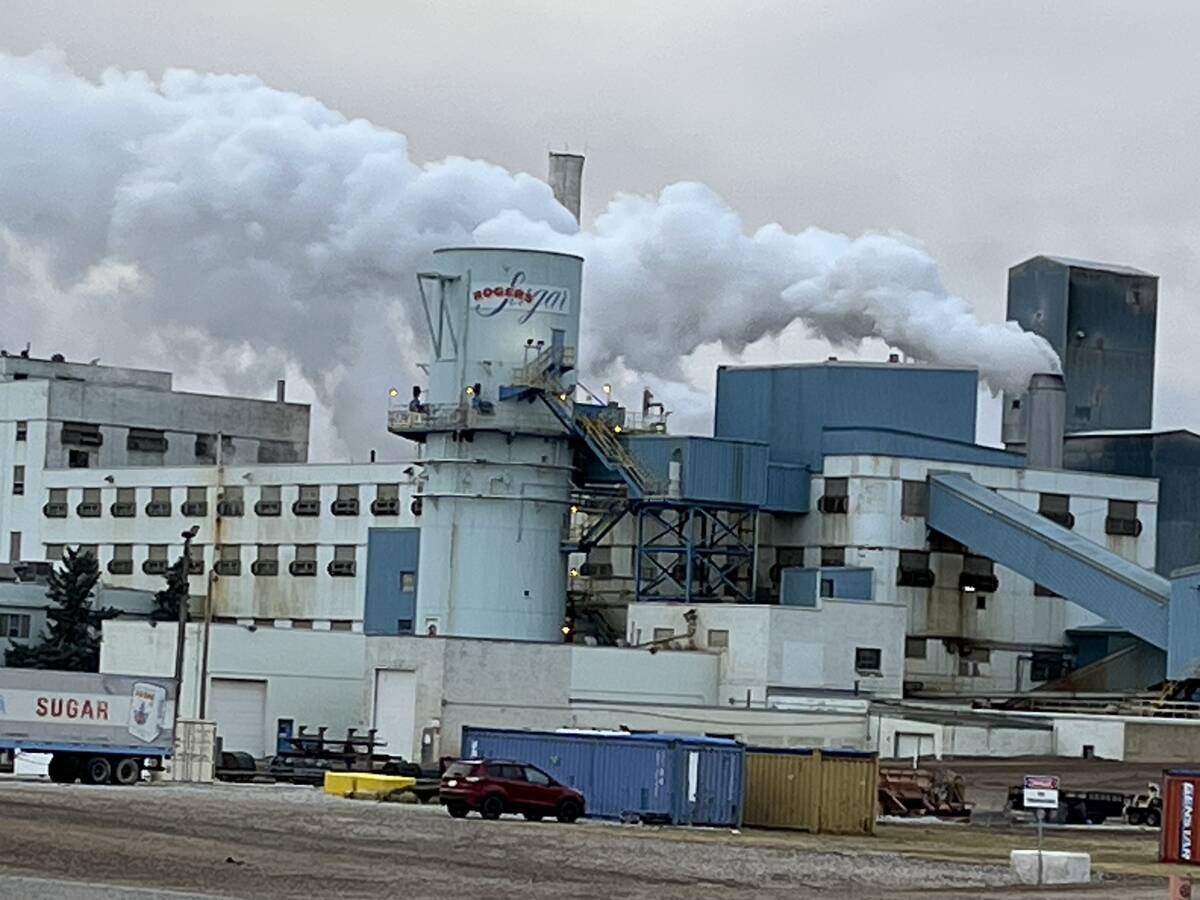Andre Vogelaar has as many as 3,000 head of cattle in his feedlot that are supposed to be dead by now. By July another 2,000 head will be ready for slaughter.
Each week, Vogelaar and his crew at Claresholm Beef Producers sort the fat cattle from the overly fat cattle in the 8,000 head feedlot at Claresholm, Alta.
Vogelaar knows he will lose money on the cattle he sells now, but he’s trying to stop the penalties from shipping overly fat cattle.
In the packing industry the magic number is 925 pounds. If the carcass is heavier, Vogelaar will be penalized with a 25 cent per pound discount.
Read Also

Sugar beet harvest underway in southern Alberta
Alberta Sugar Beet Growers hosts field tour to educate the public on the intricacies of the crop, its harvest process, and contracts with Lantic Sugar
“Instead of selling cows for 75 cents you’re now selling them for 50 cents. Instead of taking a $300 hit you’re taking a $500 hit,” said Vogelaar, who dribbles the cattle out of the feedlot to the packing plants each week in an attempt to minimize his losses.
Vogelaar has been feeding his cattle a maintenance ration to slow weight gain.
It’s a scenario repeated in feedlots across southern Alberta, said Ron Axelson, general manager of the Alberta Cattle Feeders Association. He estimates there will be 300,000 head ready for slaughter within the next 45 days, on top of the cattle already backed up in prairie feedlots.
“The system is plugged up,” said Axelson, who is depending on a federal and provincial aid package to help feedlot operators, who are losing about $400 per head on each calf. It’s a huge loss when the average profit on every animal is only $40 to $50.
The industry has been reeling since bovine spongiform encephalopathy was discovered in one cow in Wanham, Alta., on May 20. The United States and other countries have closed their markets to Canadian cattle and beef, cattle sales have been light, and meat and animal inventories are beginning to back up.
“An aid package is really critical to get the system up and running again and help the cattle feeding industry,” said Axelson.
The federal government is proposing any aid package be funnelled through the agriculture policy framework safety nets, like the proposed new Net Income Stabilization Account or other federal aid programs.
Federal agriculture minister Lyle Vanclief said he is working with industry and provincial governments to come up with a solution.
“I understand without question the cash flow issue that our industry is going through at this time. I assure you our government will be working on every front we possibly can to help relieve that difficulty,” said Vanclief. He pointed to existing loan programs, compensation for animals that were tested and job sharing as ways to reduce the impact.
In the House of Commons last week, opposition leaders pressed the government for a compensation commitment and a promise that it will go beyond help available through the agricultural policy framework.
“The existing APF is not designed to deal with the special circumstances of natural disaster,” Canadian Alliance leader Stephen Harper complained. “The World Trade Organization allows for special programs and the APF operates at glacial speed.”
Dennis Laycraft, executive vice-president of the Canadian Cattlemen’s Association said his organization has told federal and provincial governments the cattle industry needs an aid package that will get money to feedlot owners quickly.
“The things that are the most important are getting the border opened, then a quick and decisive program of enough substance to stabilize the feeding industry and go a long way to reduce the potential cost to the industry.”














